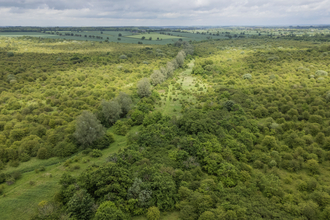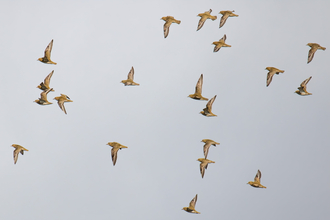Our constituent Trusts were founded, between 50 and 60 years ago, by some of this country’s leading naturalists and ecologists, such as Max Walters, Franklyn Perring, Alex Watt, Tony Vine and James Fisher. Over the years, generations of naturalists have documented the wildlife of our growing array of nature reserves, and we’ve benefited from some deep ecological research such as Terry Wells’s pioneering studies of orchid populations, and Norman Moore’s dragonfly work, or Max Hooper’s experimental work on hedges and their colonisation by shrub species.
More recently, staff and students from universities and research stations have investigated breeding birds on key sites, butterfly habitat use and dispersal, hydrology and nutrient levels. Trust staff also carry out site surveys, condition assessments and evaluations alongside the vital management work that keeps reserves in good condition.
All of this work provides background and context, and can guide future management. But it will never be enough. Research ecologists can usually work on only one or two sites, and rarely for more than 2-3 years. Our own staff can spare only a few days a year for survey work. To cover the richness and diversity of our nature reserves needs a greater resource and a longer-term commitment than most academics can provide. Reliable, regular, year-on-year monitoring needs the enthusiasm and dedication of volunteers!
One of our core values is that Conservation depends on local knowledge and good science. That has always been true, but in the context of climate change is more vital than ever before. Much conservation management is based on the careful application of ‘tradition’ - we manage woods, mow and graze grasslands in a way which relates closely to the ways these habitats were created by human hand over the proceeding centuries. But things may be different in future. Climate change has already increased the growing season, and may mean that the species composition of our habitats changes. Nitrate pollution in our rivers and streams, and even in the rainfall, may mean that plants grow faster and more vigorously, and that previous levels of grazing will no longer suffice. Hundreds of species have colonised our three counties, naturally, in the last twenty years. Some of them such as the tree bumblebee and little egret are new to Britain and yet fitting in well with our existing fauna. Others, such as silver-washed fritillary and purple emperor, have recolonised reserves after a prolonged absence. Not all arrivals are welcome: new diseases such as Ash die-back could transform the appearance of our landscape and our nature reserves in the way Dutch elm disease did in the 1970s.
Despite ample evidence that things are changing, it remains difficult to predict exactly what will happen in future. So, the only way we can ensure that our nature reserves are managed most effectively, and that we provide space for current species to thrive and for new species to colonise naturally, is to survey, record and monitor what’s actually present, and how it’s faring. In a changing climate, management work on nature reserves has an experimental component: at the least, finding out if what worked last decade will still work now. As more than one ecologist has commented, the species keep us honest: we will always do what we think is best for a nature reserve, but only the response of species will confirm that we are right. This is why we provide probably the widest range of training workshops anywhere in the country, so our volunteers can develop and sharpen their skills, to do even more and better monitoring in the future.
Many of you have volunteered for over a decade with our Ecology Groups or on individual nature reserves. Some of you have been recording local wildlife for much longer than that. Thanks for your invaluable contribution to our knowledge of our brilliant nature reserves, now and long into the future.



